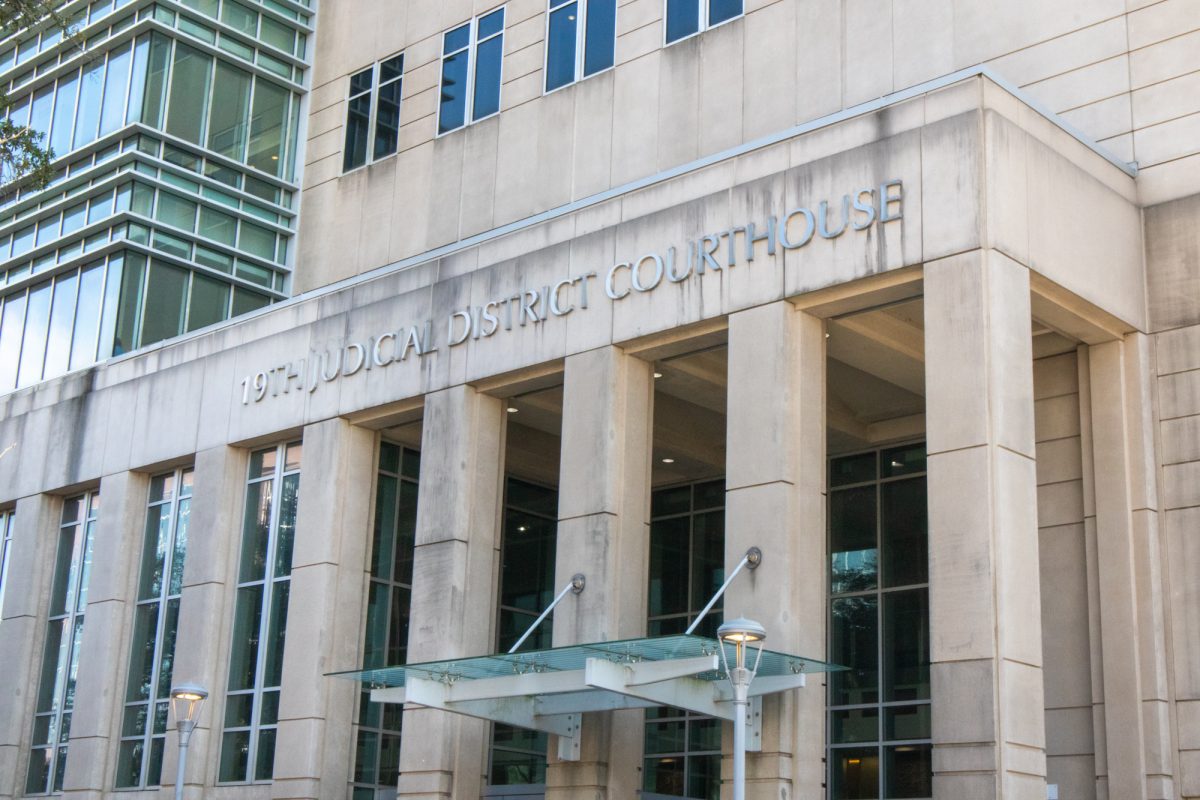Immortalized in the Alma Mater and fixed in tailgaters’ memories, the more than 12,000 live oak trees shading campus are some of the University’s most recognizable features and are at risk because of impending budget cuts. These oaks line the streets, fill the Quad and encircle the Parade Ground, where a brick path splits the field. The two trees nearest that walkway and Highland Road were both struck by lightning but tell different stories.One of those oaks gives a full circle of shade — arborists saved a large “leader,” or limb, swooping from the trunk toward the ground, by adding a pole beneath the branch to add support. But the second tree’s shade is like a pizza with one slice missing — a leader there was left unattended and broke from the tree. The second tree’s story could be repeated in coming years if anticipated budget cuts are made a reality because “the arborist crew, which cares for the … live oaks valued at approximately $50 million will be eliminated,” according to a proposal Chancellor Michael Martin recently submitted to the LSU System.”In one year, there will be more dark spots on campus [at night], more dead wood in trees and more potential for structural failure,” said Fred Fellner, assistant director of Landscape Services. JUSTIFYING THE CUTSThe LSU System faces a $133 million deficit, $46 million of which will come from the Baton Rouge campus. Martin proposed a three-level plan of how the cuts would impact the University. Level Three cuts are made to units delivering “the core functions of teaching and research,” while Level One cuts are those “indirectly related” to that core. Landscape Services fell in the Level One reductions and with Custodial Services will account for $2.15 million in cuts including 88 staff positions.”From what I’m hearing the administration say, we have no reason to doubt this cut will happen,” Fellner said. “We’ve already been operating with a small crew for years. Landscape Services is not fat, but we’re not in the classroom or supporting that mission directly, so from an administrative standpoint it makes sense we’re on Level One.” Fellner said the arborist crew is typically comprised of a manager, two licensed arborists and two helpers who care for the oaks in addition to more than 5,000 other large trees on campus. This crew, he said, “gives us the ability to stretch out the lives of the trees” and isn’t “the average guy who picks up a chainsaw because they have nothing else to do.”Martin said in an email the oaks “are a distinction and unforgettable feature of the LSU campus,” and though he hopes the trees will be protected for future generations “no firm guarantees can be offered” considering the budget situation.”The only explanation is that we have to care for people first during fiscal crises such as this,” Martin said in the email. “If we don’t have faculty and students, the campus is irrelevant.”MISSING SERVICESFellner said the arborist crew monitors campus to keep the oaks functioning with the world around them — pruning branches with traffic clearances and lighting obstructions in mind and monitoring for dying branches over walkways and parking areas. Trimming also ensures the trees’ resources — light and water — are not limited.”It’s a safety risk to take away your arbor crew without replacing it with something,” Fellner said.Fellner said unattended trees “compound as a problem over time,” and annual hurricane seasons could pose increasing risks for the trees each year without an arborist crew. Hurricane Gustav, which blew through campus in 2008, knocked down one of the Quad’s oaks.The crew also installs lightning protection systems in live oaks. These systems can be installed in one day by the crew and cost about $1,500 per tree. Fellner said these systems should be installed on every oak, but already limited funding prevented that goal — only six of the Quad’s 13 live oaks have such systems — and coming cuts will only make the situation worse. The arborist crew is also working to build a website indexing every campus oak. The site, Fellner said, is beneficial in comparing trends like disease and growth among trees. The crew uses the site to run maintenance queries while the public can find specifics about trees on campus.The crew also gives trees “quick fixes” like bursts of irrigation when needed, and Fellner said what his crew does in a week could take months for some contractors to complete. The crew also plants 200 to 300 new trees each year, with 20 to 30 percent of those being live oaks. The crew recently removed a palm tree from the traffic circle near the Cox Communications Academic Center for Student Athletes and in its place transplanted an oak from a farm in Lafayette. Though that tree cost more than $3,000, Fellner said most plantings cost closer to $200, and in 10 years, the oak is worth $10,000.ENDOWING THE FUTUREThe LSU Foundation sponsors the “Endow an Oak” program, and about 160 campus oaks are endowed. Money from this program is split — half goes to the Oak Endowment, and half goes into an account for immediate use.Quad oaks cost $50,000 to endow, Parade Ground oaks cost $10,000 and oaks elsewhere on campus cost $4,000. Fellner said the endowment has about half a million dollars right now, and if the account hit closer to $2 million, a full-time “Live Oak Preservation Crew” could be dedicated to ensuring the oaks’ longevity.
—-Contact Nicholas Persac at [email protected]
Campus oaks, arborist crew at risk of facing impending budget cut eliminations
July 20, 2010






